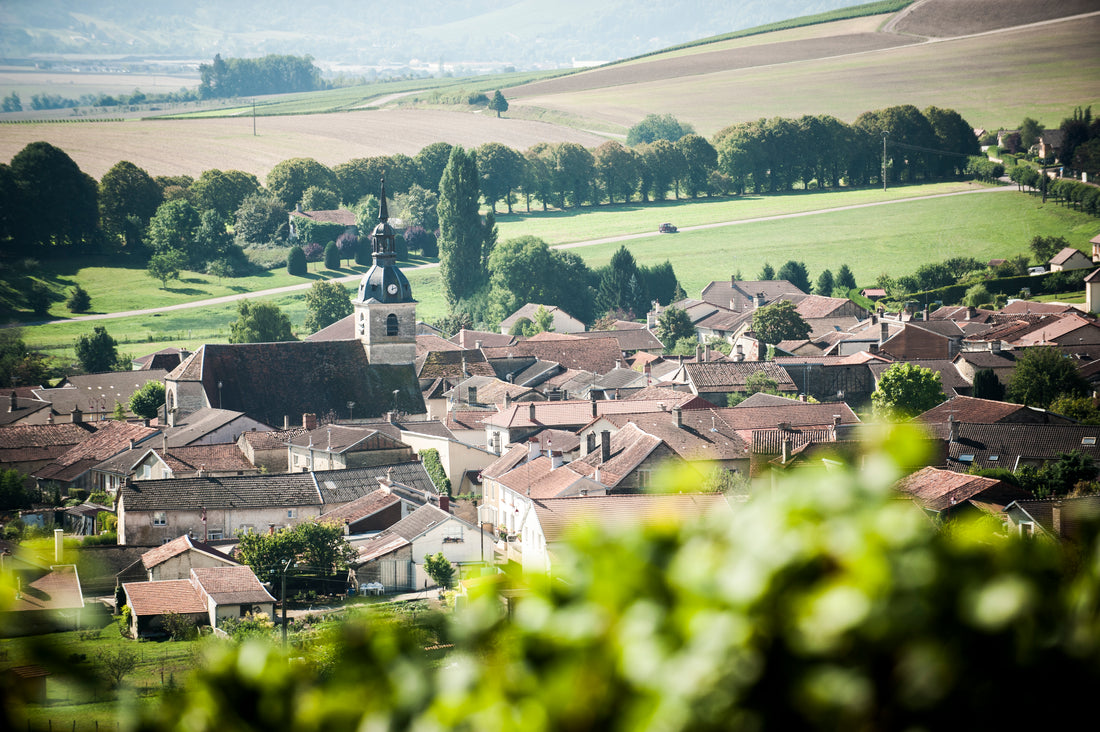
Where does Champagne come from?
Sparkling wine is commonly named Champagne, however only wine from the actual Champagne region in Northern France can legally use this name. Although it is now becoming common knowledge of this fact, many people may still refer to a glass of fizz to be Champagne.
Champagne is the most northern area of vineyards in France and can be reached within an hour’s journey East of Paris. The region is a popular spot for wine tourists and hosts two major cities in Reims and Épernay. Surrounding these cities is where the true magic happens in the 33,000 hectares (81,500 acres) of vineyards.

Champagne is divided in to 5 main sub-regions which all have unique qualities, history and specialities of grapes when it comes to making the wine which eventually ends up in your glass. These regions are very important when it comes to Grower Champagne. Your traditional house champagne will usually use a variety of grapes from numerous regions, villages and vintages which will be hard to distinguish in the blended style of Champagne. However, with Grower Champagnes the focus is on terroir and an expression of the smaller area of land each producer works with.
The 5 sub-regions are Montagne de Reims, Vallée de la Marne, Côte des Blancs, Côte de Sézanne and Côte des Bars. The first 3 are the most famous with an unrivalled history of growing the best grapes and making the best cuvées. Whereas, Côte de Sézanne and Côte des Bars are currently growing their reputation within the region and are starting to get the deserved acclamation.

Montagne de Reims
Located between the cities of Reims and Épernay this region is named after the ‘Mountain’ which is actually more of a forest topped hill climbing to 283 metres.
Grape Varieties are approximately Pinot Noir 38%, Meunier 34% and Chardonnay 28%.
The region has the most diverse soils, hence the split of the 3 most common grapes. The Pinot Noir is the most dominant and best suited to the northern slopes and hosts the most Grand Crus in all of Champagne with a total of 9. Mailly, Bouzy and Sillery being three of the more well-known.

Vallée de la Marne
Located along the Marne River, both east and west of Epernay, the colder climates are well suited to the Meunier grape with 62% of the area planted with this grape.
The soil contains chalk, limestone, clay, marl, sand and flint and hosts one of the most renowned Grand Crus just east of Épernay, Aÿ. Although the region is famous for Meunier, Aÿ grows some of the best Pinot Noir in the region and its wines are highly sought after. The only other Grand Cru in the region is Tours-sur-Marne which can be found further East of Aÿ.

Côte des Blancs
This region is directly south of Épernay and is world famous for its production of Chardonnay grapes. Vineyards are highly sought after here and the grapes are the most expensive of anywhere in Champagne. Plantings of 82% Chardonnay dominate the land as the grape is perfectly suited to the Chalky soils.
The Côte des Blancs hosts 6 Grand Cru villages of Avize, Chouilly, Cramant, le Mesnil-sur-Oger, Oger and Oiry. The cuvées created from these grapes are considered some of the finest in the region and have excellent ageing quality.

Côte de Sézanne
Sometimes referred to as a smaller Côte des Blancs this region sits further south of Épernay. Although being ideal for Chardonnay it’s soil isn’t as Chalky so produces less acidic and more aromatic wines than the Côtes des Blancs.
Even though there are no Grand or Premier Cru villages in the region, areas of the Sezanne are developing a great reputation for its unique Chardonnays from villages such as Allemant. The growers in the region are working hard to improve their status and there are some exciting producers willing to demonstrate the beauty of their terroir.

Côte des Bars
Also known as The Aube, this is the newest sub-region to be acclaimed to the Champagne appellation and is actually closer to Chablis than it is Reims or Épernay. The town of Troyes is close by and is around a 2-hour drive South East from Épernay. There is a great history to this region and how and why it is part of Champagne.
Pinot Noir is dominant here due to the warmer climates and less chalk in the soils. Grower producers are driving production in this area and are having great success of showcasing the region. The up and coming sub-region is proving to produce some exciting wines which is making the Champagne region stand up and listen. The large houses will regularly purchase Pinot Noir from here due to its roundness and ripe fruity flavours.

Each region has its own story to tell and we will delve deeper in to these throughout our journey. We will be looking to showcase wines from all the regions on our online store and have producers who appreciate the terroir and show a passion for their area. The diversity of the region is a beauty in itself and we look forward to bringing more information to you.


